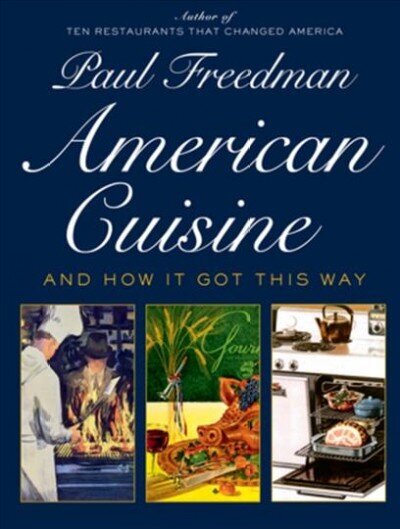
| Autor: | Paul Freedman |
| Lehekülgede arv: | 528 |
| Ilmumisaasta: | 2019 |
| Kauba ID: | 13804441 |
A leading food historian details the culinary habits of Americans from the days of the colonies to the present, exploring how regional dishes like New England clam Chowder and Louisiana gumbo moved aside for processed and packaged food. Illustrations.
With an ambitious sweep over two hundred years, Paul Freedman’s lavishly illustrated history shows that there actually is an American cuisine.
Combining historical rigor and culinary passion, Freedman underscores three recurrent themes regionality, standardization, and variety that shape a completely novel history of the United States.From the colonial period until after the Civil War, there was a patchwork of regional cooking styles that produced local standouts, such as gumbo from southern Louisiana, or clam chowder from New England. Later, this kind of regional identity was manipulated for historical effect, as in Southern cookbooks that mythologized gracious “plantation hospitality,” rendering invisible the African Americans who originated much of the region’s food.As the industrial revolution produced rapid changes in every sphere of life, the American palate dramatically shifted from local to processed. A new urban class clamored for convenient, modern meals and the freshness of regional cuisine disappeared, replaced by packaged and standardized products such as canned peas, baloney, sliced white bread, and jarred baby food.By the early twentieth century, the era of homogenized American food was in full swing. Bolstered by nutrition “experts,” marketing consultants, and advertising executives, food companies convinced consumers that industrial food tasted fine and, more importantly, was convenient and nutritious. No group was more susceptible to the blandishments of advertisers than women, who were made feel that their husbands might stray if not satisfied with the meals provided at home. On the other hand, men wanted women to be svelte, sporty companions, not kitchen drudges. The solution companies offered was time-saving recipes using modern processed helpers. Men supposedly liked hearty food, while women were portrayed as fond of fussy, “dainty,” colorful, but tasteless dishes tuna salad sandwiches, multicolored Jell-O, or artificial crab toppings.The 1970s saw the zenith of processed-food hegemony, but also the beginning of a food revolution in California. What became known as New American cuisine rejected the blandness of standardized food in favor of the actual taste and pleasure that seasonal, locally grown products provided. The result was a farm-to-table trend that continues to dominate.American CuisineAmerican Cuisine
| Kauba ID: | 13804441 |
| Kategooria: | Retseptiraamatud |
| Tootepakendite arv: | 1 tk. |
| Paki suurus ja kaal (1): | 0,03 x 0,19 x 0,24 m, 0,97 kg |
| Kirjastus: | WW Norton & Co |
| Raamatu keel: | Inglise keel |
| Kaane tüüp: | Kõva |
| Vorming: | Traditsiooniline raamat |
| Tüüp: | Toit ja jook |
| Raamat väljavõttega: | Ei |
| Autor: | Paul Freedman |
| Lehekülgede arv: | 528 |
| Ilmumisaasta: | 2019 |
Toodete pildid on illustratiivsed ja näitlikud. Tootekirjelduses sisalduvad videolingid on ainult informatiivsetel eesmärkidel, seega võib neis sisalduv teave erineda tootest endast. Värvid, märkused, parameetrid, mõõtmed, suurused, funktsioonid, ja / või originaaltoodete muud omadused võivad nende tegelikust väljanägemisest erineda, seega palun tutvuge tootekirjeldustes toodud tootespetsifikatsioonidega.